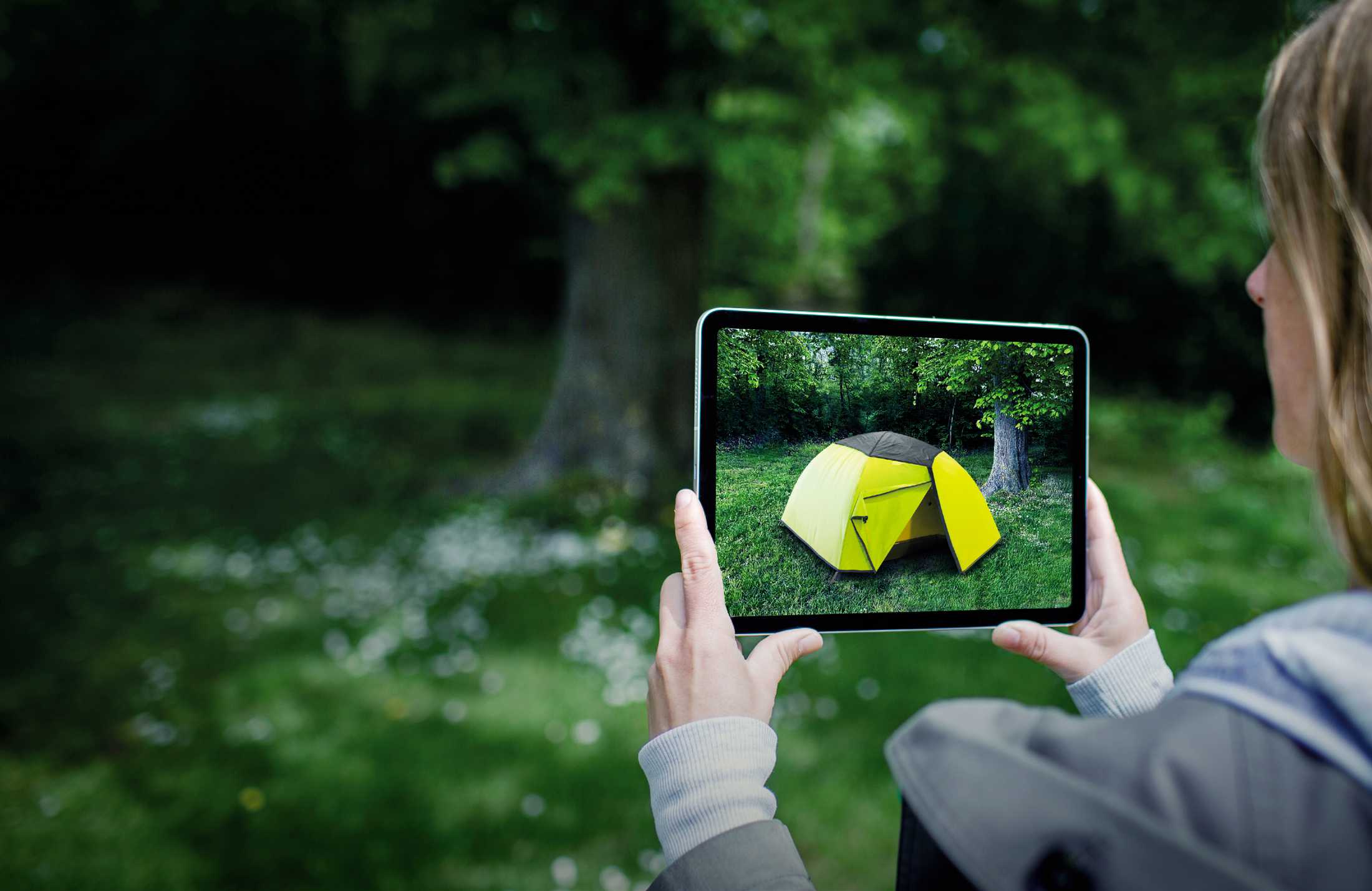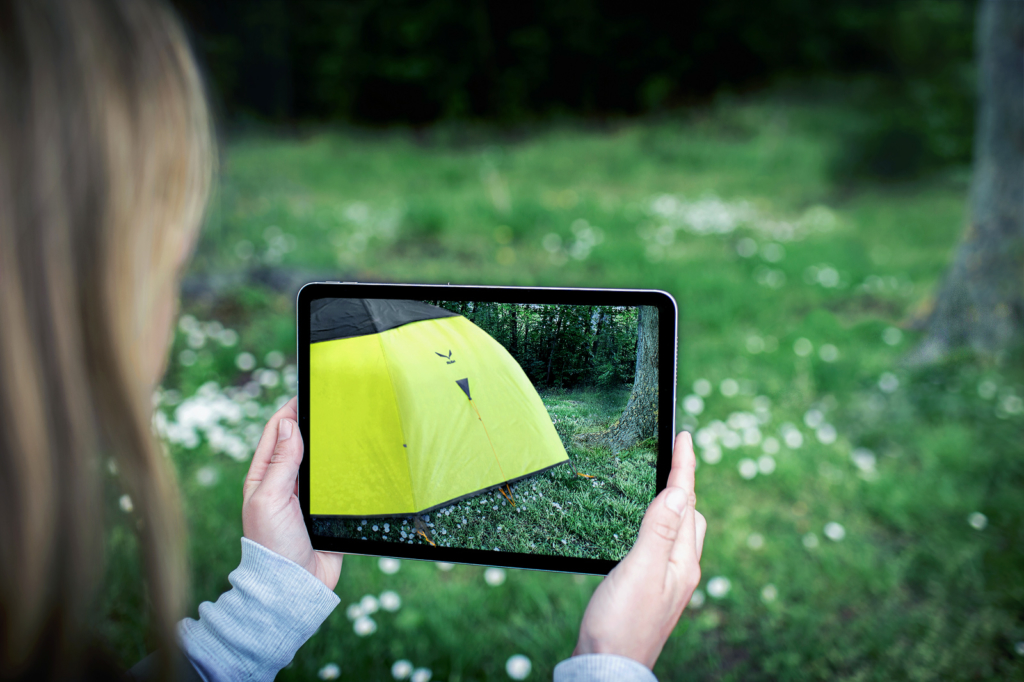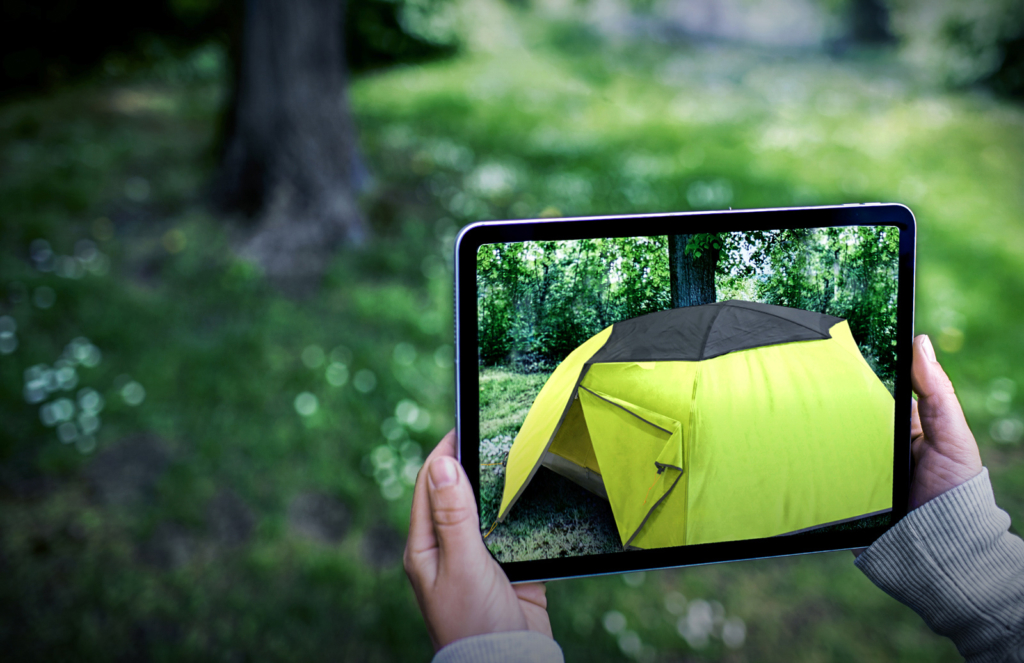
AR know-how: what actually is occlusion?
Our customers frequently ask what to expect from augmented reality in the near future. Occlusion is one of the answers to that.
What are the major future topics in the field of augmented reality?
Sure, augmented reality is still relatively new to most users. We notice this again and again when our customers see their products for the first time in augmented reality. This is usually followed by just enthusiasm, which shows us that we are all on the right track.

Many of you will now ask where this connects to e-commerce, for example. Here, too, a little bit of your imagination is in demand: let’s assume you are planning to buy a new sofa. This sofa should be in a very specific place in your home. So, you now grab the augmented reality object of the desired sofa and put it exactly at the point in the room where you think it looks best. Whenever your partner comes home, the sofa for his or her device is in the place you intended. Even if you are not even at home at this point in time.
What is occlusion?
Today, however, it will be about occlusion, which is closely related to the topic mentioned above.
To understand this, we first have to consider which properties of your room are “captured” by your smartphone: First of all, these are the surfaces on or to which AR objects can be attached. Such are floors, surfaces of tables, ceilings and walls. How precisely these are measured depends on the quality of the sensors on the respective smartphone. In addition, the lighting conditions in the real room are recorded so that the reflections on the virtual AR object correspond to those on a real object in the real room. This is very important for a natural and lifelike look.
These elements, i.e. the surfaces and the light, are, so to speak, the basic requirements for the use of augmented reality. However, if, for example, a person passes the field of vision behind the virtual AR object, today it often covers the AR object. This should not actually be the case, since a physical object in front of the person would not be covered. In this case, the AR perception is significantly reduced, as the viewer becomes very attentive to the false illusion.

Occlusion in the field of augmented reality is the ability to cover virtual AR objects with objects physically located in the room – in case these real objects are in the foreground in front of the AR object.
This applies to static objects – as in one of the shown images, for example, the sleeping bag that lies within the tent and covers the inner view of the tent. This creates the impression of a perfect illusion.

But this also applies to people covering AR object by waking by. Only and exclusively, these cover the AR object. To do this, the smartphone must also perceive the person and their position within the room in addition to the above-mentioned measured variables.
Whether this occlusion takes place with static objects or moving people in augmented reality depends on the device and the operating system.
In Apple devices, people occlusion works in smartphones and tablets that are equipped with at least the Apple A12 chip or newer.
What we should always keep in mind: all these properties and technical finesse ultimately are there to ensure that the time will come when the virtual object can no longer be distinguished from the physical object. This also means that we then can interact directly with the virtual object with our hands, for example. In any case, none of the experts doubts that all of this will come.
What does it cost?
Shouldn’t your customers be able to explore your products like this? Please see for prices of our scanning service on your behalf or for a 3D scanning system onsite:
Which devices are supported?
You don’t need an app anymore to view AR models. By now the technology has been deeply integrated into the mobile operating systems iOS and Android as both Google and Apple see the enormous potential.
As the result more than two billion smartphones have this capability at present (May 2021). And on your side you don’t have to do more than add a normal link to your online shop or website; no initial investment, no software development.
iOS/Apple
AR requires an iOS or iPadOS device with iOS 11 (or later) and an A9 processor or later; in detail:
– iPhone 6S or later
– iPad Pro (all models)
– iPad (5th generation) or later
– iPad mini (5th generation) or later
– iPad Air (3rd generation) or later
– iPod touch (7th generation) or later
Android/Google
AR usually requires Android 7.0 or later. The capable devices can be found at google.com. This list is continuously updated by Google:




